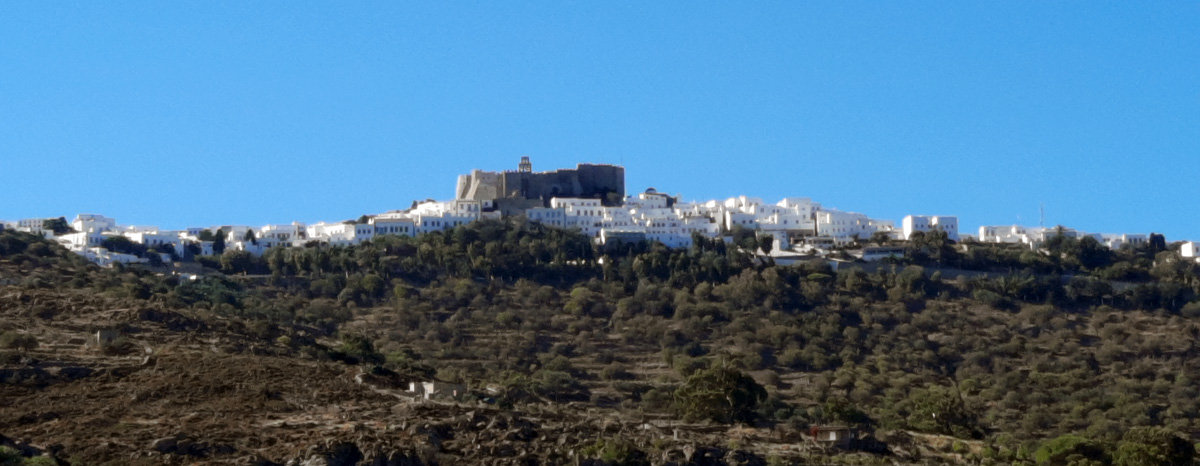
The island was referred to by many of the ancient writers (Thoukydídis, Strávonas) as PÁTNOS and, like N. Léros, was protected by goddess Ártemis. There are remains of an ancient settlement with a citadel (4th century BC) in “Kastélli”.
The island was used as a place of exile during the Roman rule, and one of the Disciples of Christ, Ioánnis, who wrote the “Apocalypse” and the homonymous Gospel, was sentenced to exile here. The island became very famous during subsequent years because of the Evangelist’s stay here but fell into obscurity later (10th century) because of the pirates that ravaged the whole of the Aegean.
From the 11th century Pátmos began to recover, when the monk Christódoulos from Nice founded the Monastery of Ágios Ioánnis Theológos. The “Pátmos School”, into which there was an influx of youths from all around Greece, was established, as well as the Library of Pátmos, where great manuscripts were kept, many of which have since been stolen by the various plunderers (among those stolen is the “Kódikas” of Plátonas – the oldest known manuscript of Plátonas – now found in the library of Oxford, England).
After the fall of Constantinople by the Turks, many from the sovereign town sought refuge on the island and other refugees mainly from Kríti later joined them. During the Venetian – Turkish War (mid 17th century), the island harboured a Venetian naval station. Pátmos was the birthplace of Emmanuél Xánthos, who was one of the founders of the “Philikí Etaireía” (the secret Greek organisation that prepared the way for the uprising of the nation against the Turks in 1821).
Pátmos took an active part in the Greek Revolution offering both sailors and soldiers. The island did not succeed in its liberation and remained under Turkish rule to follow the fate of the rest of the Dodekánisa, until it was finally reunited with Mother Greece in 1947.
The castled Monastery of Ágios Ioánnis dominates over the life of this sacred island and there are many religious sites (the Monasteries of Agía Agíon, Evangelismós, Panagía and Churches of Panagía Gavrá, Prophítis Ilías, Ágios Nikólaos etc).
Flavours: You will find very nice “touloumotýri” (white cheese kept in a goatskin) and “mizýthra” (soft white cheese) as well as the tasty “poungiá” (sweet).





